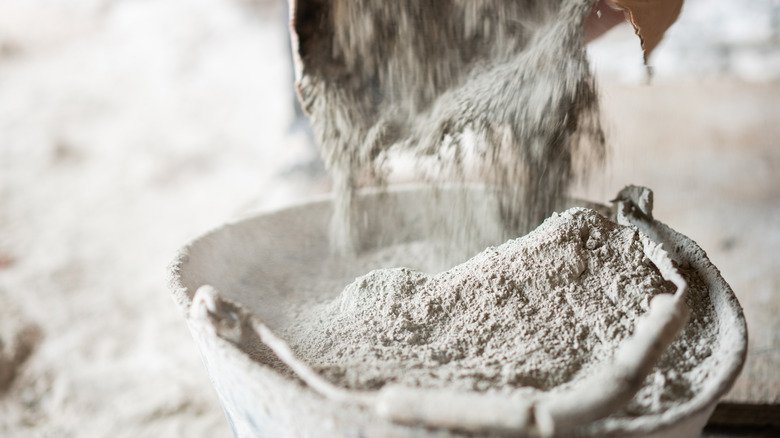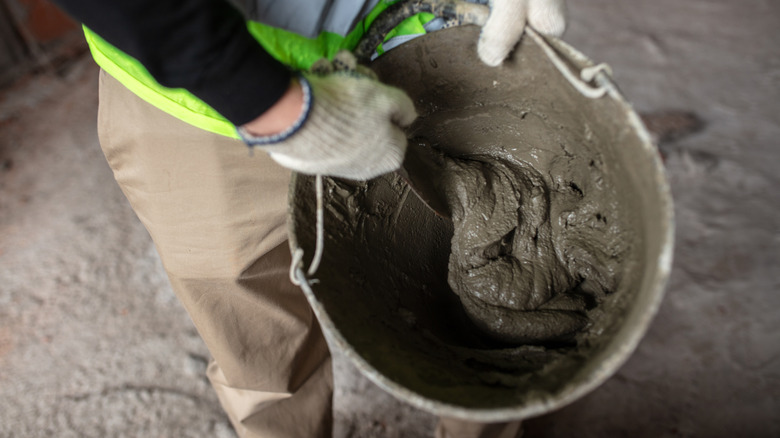The Difference Between Concrete And Cement: Composition, Process, And Environmental Impact
The modern world is built on concrete, and cement is what makes it possible. You've probably heard these two terms used interchangeably, especially while watching DIY videos on YouTube. However, they should not be confused. Cement is to concrete what flour is to cake. It's just one ingredient in the mix, while concrete is the final product that holds up our buildings and bridges. When cement is mixed with water, the result is a binding agent. To form the strong, durable material we know as concrete, aggregates like sand, crushed stone, and gravel are a necessary addition to the mix.
That said, the difference isn't just semantic. It's important to understand how cement is formed and how it impacts the environment. Cement production is one of the most carbon-intensive industrial processes on the planet. Until we can start large-scale production of cement-free concrete, it continues to play a major role in global emissions. If we want greener cities and more sustainable infrastructure, understanding how these materials work is important.
Composition and production
Cement is generally made from a mixture of limestone (calcium carbonate) and clay. The clay provides key minerals like calcium, silicon, iron, and aluminum. When heated at high temperatures inside a rotating kiln, the minerals form tricalcium silicate and dicalcium silicate. These compounds are responsible for the strong binding properties once water is added. At the end of this process, the final resulting material, known as clinker, is ground into a fine powder to form the cement.
On the other hand, concrete is a composite material. Cement is mixed with water to form cement paste. When the aggregates are added in, the paste binds them together, and as it hardens, it forms a solid mass. This combination gives concrete the strength, durability, and flexibility necessary to build skyscrapers, roads, and other structures. Also, concrete doesn't have a singular recipe for every application. The recipe can be customized using different ratios of cement, water, or aggregates to focus on different properties. New ingredients are also being researched and added to create new types of concrete, like self-healing concrete and crack-resistant concrete.
Environmental impact
Cement production is responsible for approximately 7-8% of global CO2 emissions, according to a 2022 research article published on Nature. The process of heating limestone releases carbon dioxide not only from burning fuel, but also from the chemical breakdown of the rock itself. For every ton of cement produced, nearly a ton of carbon dioxide is released into the atmosphere.
Since cement is the active binding ingredient in concrete, its environmental footprint scales with global construction. As cities and infrastructure grow, so does the demand for concrete, making it problematic for the battle against climate change. However, concrete is essential, so researchers and engineers are focusing on ways to make both cement and concrete more sustainable. Some strategies include replacing a portion of the cement with supplementary materials like slag, which produce less CO2. Others are exploring carbon capture technologies and even 3D printing concrete. Transitioning to greener alternatives is complex, but innovation is slowly taking place.


